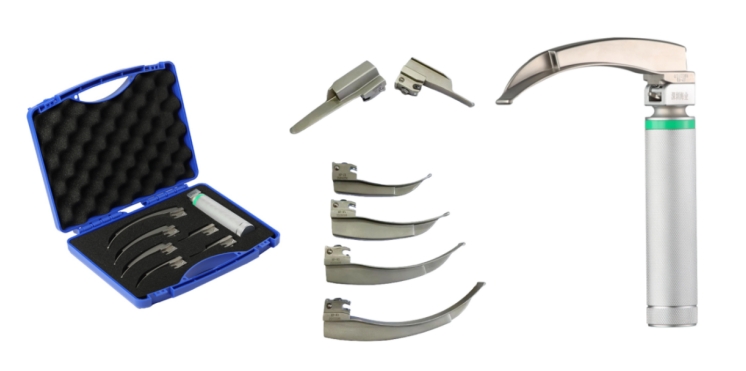The LED Fiber Optic Laryngoscope combines fiber optic transmission with LED technology, offering high brightness, low power consumption, and long lifespan. It provides stable, near-natural white light illumination, enhancing doctors' precision in airway management. Its portability and efficiency make it an essential tool for use in difficult airway management, operating rooms, ICUs, and emergency settings.
Fiber embedding methods in the laryngoscope blade affect its durability, light transmission efficiency, and ease of cleaning and disinfection. Below, we analyze the pros and cons of the main fiber embedding methods available on the market.
The fiber is partially or fully exposed on the blade’s surface, typically fixed in place using surface grooves or small channels.
Advantages:
Simple Structure: The fiber is secured at key positions on the blade (e.g., the proximal and distal ends) using small holes or clips, making the design simple and cost-effective for large-scale production.
Ease of Maintenance: The fixed-point design allows for easier fiber replacement, making quick repairs possible, especially in environments requiring rapid maintenance.
Disadvantages:
Less Secure Fixation: Compared to channel-fixed methods, external fiber fixation may expose parts of the fiber, increasing the risk of damage during use.
Higher Light Loss: Exposure may lead to light transmission losses due to bending or unstable fixation, affecting the quality of illumination.
Prone to Contamination: Exposed fibers are more susceptible to contamination from blood, mucus, and other substances, making cleaning and disinfection more challenging.

The fiber is embedded within the blade, typically protected by a sealed conduit or channel, and is completely enclosed.
Advantages:
Pollution Prevention: The fiber’s complete enclosure inside the blade protects it from external environmental factors like dust and moisture, reducing contamination risks and safeguarding it during disinfection.
Stable Light Transmission: The fixed path of the internal fiber ensures consistent light transfer from the handle to the blade's tip, providing uniform illumination.
High Durability: Precision processing secures the fiber within a sealed channel, ensuring efficient light transmission and minimizing the risk of fiber damage.
Disadvantages:
High Processing Difficulty and Cost: If the fiber becomes damaged or worn out within the channel, replacement can be challenging and may require professional repair or a complete blade replacement.

The Haiye video laryngoscope utilizes a fully enclosed internal embedding design, which incorporates the aforementioned advantages and is suitable for various complex clinical environments. Choose HAIYE's fiber optic laryngoscope,, ensuring that every procedure is more precise and reliable!